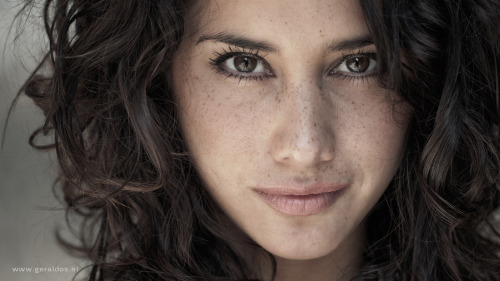30 seconds project: interview with Gerald Emming Self-taught photographer, Gerald Emming, based in t
30 seconds project: interview with Gerald Emming Self-taught photographer, Gerald Emming, based in the Netherlands, presented to us his new and interesting project called “30 Seconds”. The Award-winning photographer simply attempts to capture the beauty of people in the streets. Photographs without any premeditation try to reveal the beauty of naturalism. I think, personally, that these portraits look brilliant and I wouldn’t have guessed that they were taken without any preparation; the people in these portraits look absolutely brilliant! Gerald, who is also a professional filmmaker at the University Medical Center of Groningen, kindly agreed to have a small chat with me about this unique project and tell more about himself as well. So, tell us more about yourself. How long have you been into photography? I held my first (Agfa) camera when I was a kid. My father taught me the basics and my neighbor had a “dark room”, so I played around with photography and experimented from then onwards. In 2008 I picked up photography in a more serious way. I have been making films and educational movies since 2000, and the gap between both worlds is small. The introduction of Digital Cameras and Photoshop opened a whole new dimension for me. Are you a self-taught photographer? Yes. I followed some Workshops, Videos and Tutorials to learn some specific areas of photography and also went to the Dutch Fotoacademie. Besides that I learn a lot just by viewing and analyzing lots of images. Why did you decide that you wanted to capture people portraits without any preparation? In the end, this is what this project about, right? Yes, that is what it is all about! When I bought a decent DLSR I basically started this project to learn. Shooting images under all circumstances when you have basically no time to think. So my goal was to learn how my camera worked. I shoot with Carl Zeiss Lenses with manual focus to give it an extra dimension and old school feeling. I must admit that I choose Carl Zeiss because I think they give me the best result in terms of quality. I capture images of people on the street that I’ve never met before, without any preparation, within 30 seconds, trying to achieve “the same” result as when I would capture images of the same person in the studio. Is it hard to attract people that would like to participate in your project? I spot people in a crowded area, like shopping centers. I simply ask them if I may talk to them about something, and after that I tell them about the project as briefly as possible, meanwhile trying to make them feel comfortable. I show them some examples to show them what it’s all about. About 7 or 8 people cooperate out of every 10 I ask so it’s not so hard. How long are you going to continue this project? It’s a long-lasting project. It is still fun to do, the way you approach a stranger, getting the look within 30 seconds in a crowded street and at the end the stranger has to focus as well. That makes this project really great to do. As the story continues, I must admit that I look differently at the people I choose to ask in comparison to some years before, I have become picky with who I choose. Besides that I’m working with other projects as well, so the challenge is to find the right balance between both worlds. The great thing about this project is that you can pick it up anytime you want. What are trying to tell to others in this project?I want to show with this project that you can learn a lot with only your camera and yourself. Not only how you should take a good shot under any circumstance, it’s also the interaction with an unknown human being, learning to spot a face and look in a crowd, learning to think 10 steps further ahead. When I ask a person with the specific look I want, I know my image could be really great! What was the most challenging thing regarding your idea?The most challenging stranger was a man I asked who was mildly autistic. I was drawn by his face and looks, and tried to convince him about the project. But the conversation was tough and he didn’t understand what I really wanted and besides that he was in a real hurry. But in the end he agreed (I think he still had no idea what it was all about). The first shots were terrible, he was distracted by the passengers all around him, but after my first frames I told him to look straight into the camera with his chin angled down a little and I had my frame. In the end it was my favorite image as well, this man beats everyone else from all the people I shot during this project! What main assumptions have you made or what interesting things have you noticed during this project? I noticed that every person acts in a different way. I have captured more than 2000 strangers so far, and they are all so very different. The people you have great expectations about don’t always work out, and people for whom you had your doubts turned out to give you the look you were looking for. So I learned that you should always give it a try and more importantly, don’t give up! It may give you the image you were looking for! Edited by Melissa Searle -- source link
Tumblr Blog : republicx.tumblr.com
#portrait#photography#people#gerald emming#interview




